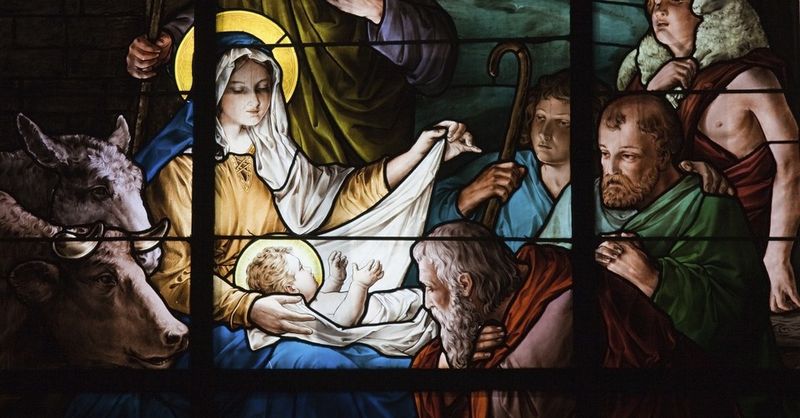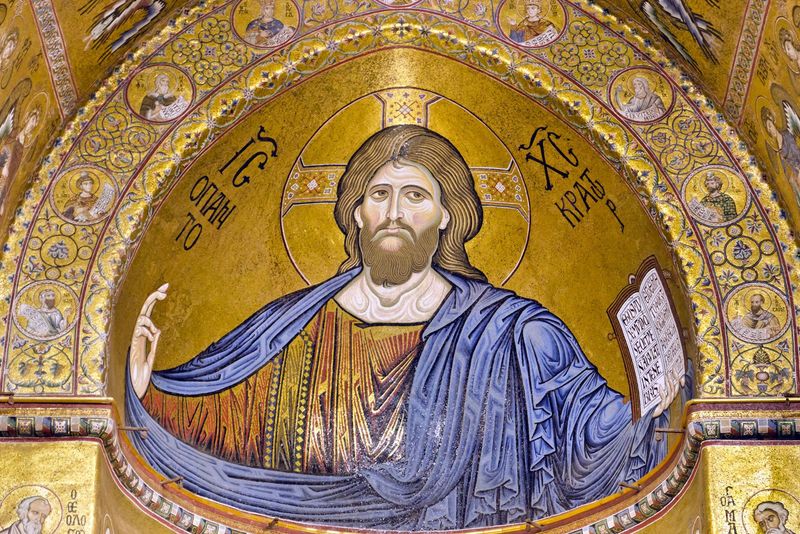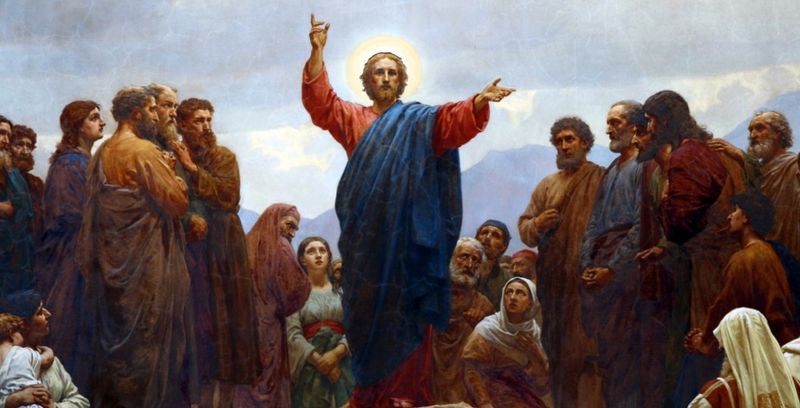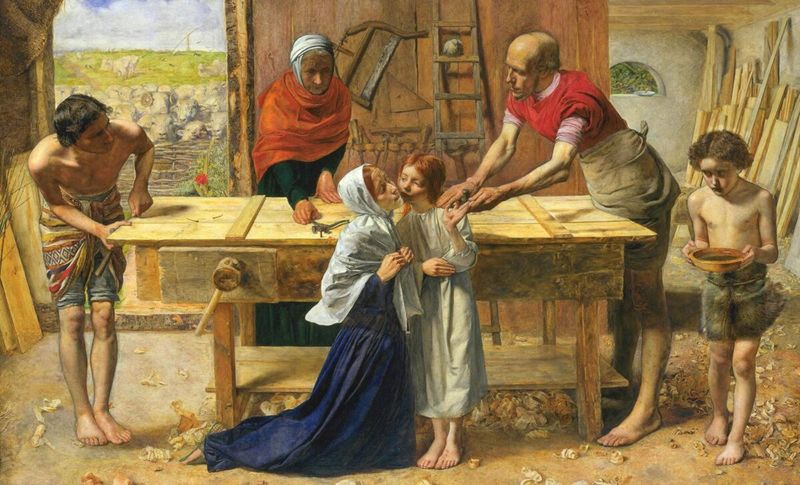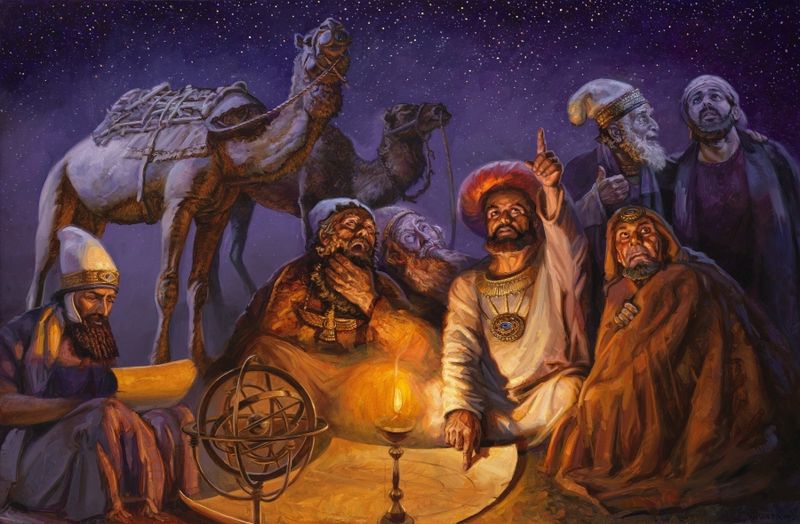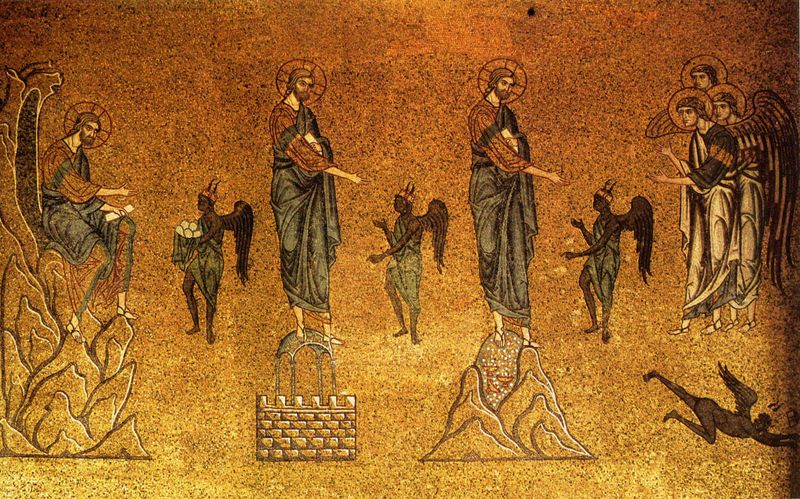Exploring the truths behind common misconceptions about Jesus can offer deeper insights into history and culture. Through this article, we delve into popular myths about Jesus that often get misrepresented or misunderstood.
1. Jesus Was Born on December 25th
Ever wondered why December 25th is celebrated as Jesus’ birthday? The truth is, the Bible doesn’t specify a date. It’s believed that early Christians chose this day to coincide with existing pagan festivals.
By doing so, they made the transition to Christianity smoother for converts. This timing aligned with the Roman festival of Saturnalia, which celebrated the winter solstice. The decision was more about tradition than fact.
In reality, historians believe Jesus was likely born in spring or autumn, based on biblical clues about shepherds tending to their flocks.
2. Jesus Was White With Blue Eyes
Picture Jesus as a 1st-century Middle Eastern Jew, not the fair-skinned figure often seen in Western art. With olive skin, dark eyes, and hair, Jesus reflected the typical appearance of his region.
European depictions have colored perceptions for centuries, but anthropology and historical context suggest otherwise. His true appearance remains a subject of scholarly exploration. This myth underscores how cultural lenses shape historical figures.
Understanding Jesus’ likely appearance enriches our comprehension of his identity and message, bridging gaps between historical reality and artistic interpretation.
3. Jesus Spoke English (or Latin)
Imagine Jesus speaking in Aramaic, his native tongue, rather than English or Latin. Aramaic was the common language in Judea, with Hebrew and Greek possibly also spoken. Latin was rare among common people in the region.
The Gospels, originally written in Greek, later translated into Latin, often lead to this misconception. Recognizing Jesus’ linguistic context enhances our understanding of his teachings.
Language is a key to cultural insight, and acknowledging this myth helps us appreciate the historical setting of his words more vividly.
4. Jesus Was an Only Child
Did Jesus have siblings? Many traditions suggest he did, pointing to mentions of brothers and sisters in the Gospels. Some interpretations consider them cousins or spiritual kin. This debate highlights differing views on family structures in ancient times.
Understanding this context offers a glimpse into Jesus’ upbringing and societal norms. It reflects broader themes of kinship and community within his teachings.
Whether siblings or close relatives, these figures played roles in his life and ministry, enriching the narrative of his earthly existence.
5. The Bible Is a Complete Biography of Jesus
The Bible is not a full biography of Jesus but rather a collection of writings highlighting key moments. Large portions of his life, especially his early years, remain undocumented.
This selective storytelling focuses on his ministry and message. Understanding this myth invites readers to explore historical context beyond the text.
Gaps in the narrative encourage curiosity about the societal and cultural backdrop of his time. This myth reminds us that the Bible’s purpose is spiritual guidance, not exhaustive history.
6. Jesus Never Laughed or Got Angry
It’s hard to imagine Jesus without a smile or a frown, yet some think he was emotionally stoic. In reality, the Gospels reveal his full emotional range. He shared joy, sorrow, and even righteous anger, such as when he cleared the temple.
These moments humanize him, showing a figure deeply connected to his humanity. Understanding his emotional depth helps relate his teachings to everyday life.
This myth challenges us to see Jesus as both divine and profoundly human, embodying a relatable spectrum of emotions.
7. Jesus Was Poor His Whole Life
Was Jesus impoverished? While he lived simply, he hailed from a working-class family engaged in trade. His father, Joseph, was a carpenter, a respectable occupation. During his ministry, he received support from followers, indicating some level of comfort.
This myth often stems from misunderstanding his teachings on poverty and humility. Grasping his socio-economic background enhances our appreciation of his life’s choices. Jesus’ humble beginnings and subsequent ministry reveal his dedication to serving others over worldly wealth.
8. Jesus Created Christianity
Did Jesus found Christianity? Not quite. He was a Jewish teacher, deeply rooted in Jewish tradition. Christianity emerged later, as followers interpreted his teachings. He sought to fulfill, not replace, Jewish law, emphasizing reform and heart-centered faith.
This myth often arises from viewing Jesus solely through a Christian lens. Understanding his Jewish context enriches our perception of his mission. Recognizing this distinction reveals the evolution of religious identity and underscores the diversity within his message.
9. Jesus Condemned All Wealth
Was Jesus anti-wealth? Not entirely. He spoke against greed and prioritizing riches over spiritual matters. Yet, he accepted support from wealthy patrons and advocated for sharing resources.
This myth often arises from misinterpretations of his teachings. Jesus emphasized the heart’s intentions over material possessions.
Understanding this nuance helps reconcile his messages with real-world applications. He called for balance and generosity, encouraging followers to use wealth as a tool for good, not a measure of worth.
10. Jesus Was Always Gentle and Passive
Think Jesus was always mild-mannered? Think again. He challenged religious leaders, flipped tables in the temple, and spoke boldly against injustice. His passionate actions reflect a commitment to truth and integrity.
This myth often arises from selective readings of his gentler teachings. In reality, Jesus embodied both gentleness and strength, addressing wrongs with courage.
Understanding this balance offers a richer view of his character. His example inspires action and advocacy for justice, grounded in compassionate conviction.
11. Jesus Wrote Parts of the Bible
Ever thought Jesus penned parts of the Bible? In truth, he didn’t write any of it. His teachings were passed down orally, later recorded by followers. This myth often stems from misunderstandings about biblical authorship.
Recognizing this invites appreciation for the rich tradition of oral storytelling. Understanding how his words were preserved highlights the communal effort in sharing his message. It underscores the importance of community in preserving and interpreting spiritual teachings for future generations.
12. Jesus Was 33 Years Old Exactly When He Died
Was Jesus exactly 33 when he died? Not definitively. While tradition often places him at this age, scholars debate his exact age at death. Some suggest he might have been closer to 35 or older. This myth highlights the challenges of precise historical dating in ancient contexts.
Understanding this invites exploration of historical timelines. While age specifics remain uncertain, his legacy transcends numerical details. This myth encourages focus on the enduring impact of his life and teachings, rather than exact chronology.
13. The Three Wise Men Visited Jesus at the Manger
Picture the Magi arriving at the manger—now, reconsider. The biblical account suggests they came much later, possibly months or years after Jesus’ birth. And guess what? The Bible never specifies their number. This myth often arises from nativity scenes and Christmas traditions.
Recognizing this timing nuance enriches the nativity story’s historical context. It invites reflection on the journey and significance of these visitors. Understanding this myth encourages curiosity about cultural interpretations of biblical events.
14. Jesus Was Married to Mary Magdalene
Was Jesus married to Mary Magdalene? Despite modern theories, no historical evidence supports this claim. Popularized by fiction, this notion has captivated imaginations. In reality, Mary Magdalene was a devoted follower, not a spouse. This myth underscores how narrative speculation influences perceptions.
Understanding her true role offers insights into women’s presence in his ministry. Her story illustrates dedication and transformation, separate from marital ties. This myth encourages discernment between historical fact and creative fiction, celebrating her genuine contributions.
15. Jesus Wanted to Start a New Religion
Did Jesus intend to found a new religion? Not according to historical context. His mission was to fulfill Jewish law, emphasizing reform within existing frameworks. He taught heart-centered faith, not creating new institutions. This myth often arises from posthumous interpretations of his teachings.
Understanding his intentions enriches our perception of religious evolution. It highlights continuity and reform within spiritual traditions. Recognizing this invites reflection on the broader impact of his message, transcending boundaries of religious categorization.

